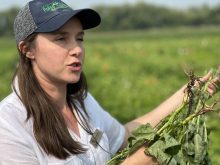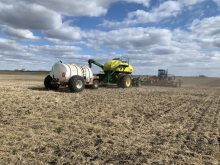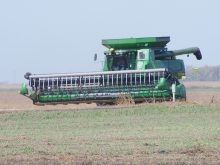Feeding the world with climate smart agriculture has been a long-standing priority for Canada’s agriculture and agri-food sector.
Agriculture was not part of the agenda at the climate change summit in Paris, but prime minister Justin Trudeau can be proud of the important role that Canadian agriculture is playing in meeting challenges related to the environment and food security.
Canadian agriculture is already focused on implementing innovative strategies for environmental stewardship.
The industry has readily implemented climate smart agriculture with innovative practices, which have made our industry more productive while minimizing impacts on the environment.
Read Also

High prices see cow-calf producers rushing to incorporate
Farm accountants are reporting a steady stream of cow-calf producers rushing to get their operations incorporated ahead of selling their calves this fall.
The country’s farmers are living proof that the world can produce more food while maintaining the resource base needed to produce that food. They are also ready to improve productivity while minimizing their impact on the environment.
Global crop production must increase by 70 percent to feed nine billion people by 2050. Meeting the demand for nutritious food will require the efficient use of valuable resources.
The per capita demand for calories and protein rises as global populations become more affluent. Feeding all the people in the world remains one of our greatest challenges and will require a collaboration of all players in a resilient, complex and competitive food system.
Replenishing the nutrients used by the crop each year with fertilizer ensures the production of sustainable food.
Canadian farmers are adopting innovative and science-based methods by applying fertilizer using the 4R Nutrient Stewardship standards of right source, right rate, right time and right place.
This world-leading Canadian-made program has the capacity to reduce greenhouse gas emissions from nitrogen fertilizer use by 15 to 25 percent. It allows producers to grow more food using existing farmland and ensuring the protection of the environment and the production of safe food for consumers.
Small-holder farms in Africa and other developing regions can use 4R Nutrient Stewardship to significantly change and improve growing conditions.
Canadian farmers are also a global leader in producing and exporting pulse crops. They make a major contribution to global food security by exporting to more than 150 countries when local production is insufficient to meet demand.
Lentils, beans, peas and chickpeas provide a variety of benefits to the world:
- contribute calories and protein
- improve health outcomes in undernourished and overnourished populations
- improve sustainability by de-creasing agricultural greenhouse gas emissions, improving soil health and improving the overall productivity of agricultural systems.
The United Nations’ Food and Agriculture Organization declared 2015 the International Year of Soils and 2016 the International Year of Pulses. The declarations signaled a shared vision for food production systems that are sustainable and contribute positively to food security and nutrition.
Canada is a world leader in soil conservation and pulse production, and the country’s agricultural industry has joined the FAO in celebrating these international years.
The industry is uniquely positioned to become not only a source of food for Canada and the world but also to be a leader in the quest for solutions that contribute to ensuring a food system that offers food for healthy people and a healthy planet.
Garth Whyte is president and chief executive officer of Fertilizer Canada and Gordon Bacon is CEO of Pulse Canada.















